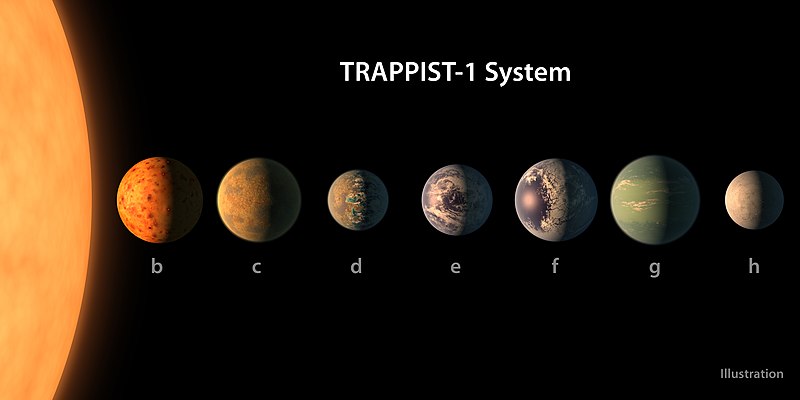Berkas:PIA21422 - TRAPPIST-1 Planet Lineup, Figure 1.jpg

Ukuran pratayang ini: 800 × 400 piksel. Resolusi lainnya: 320 × 160 piksel | 640 × 320 piksel | 1.024 × 512 piksel | 1.280 × 640 piksel | 2.560 × 1.280 piksel | 6.000 × 3.000 piksel.
Ukuran asli (6.000 × 3.000 piksel, ukuran berkas: 2,63 MB, tipe MIME: image/jpeg)
Riwayat berkas
Klik pada tanggal/waktu untuk melihat berkas ini pada saat tersebut.
| Tanggal/Waktu | Miniatur | Dimensi | Pengguna | Komentar | |
|---|---|---|---|---|---|
| terkini | 22 Februari 2017 18.39 |  | 6.000 × 3.000 (2,63 MB) | PhilipTerryGraham | User created page with UploadWizard |
Penggunaan berkas
3 halaman berikut menggunakan berkas ini:
Penggunaan berkas global
Wiki lain berikut menggunakan berkas ini:
- Penggunaan pada af.wikipedia.org
- Penggunaan pada ar.wikipedia.org
- Penggunaan pada bn.wikipedia.org
- Penggunaan pada ca.wikipedia.org
- Penggunaan pada el.wikipedia.org
- Penggunaan pada en.wikipedia.org
- Penggunaan pada es.wikipedia.org
- Penggunaan pada et.wikipedia.org
- Penggunaan pada fi.wikipedia.org
- Penggunaan pada fi.wikibooks.org
- Penggunaan pada glk.wikipedia.org
- Penggunaan pada ja.wikipedia.org
- Penggunaan pada ku.wikipedia.org
- Penggunaan pada lt.wikipedia.org
- Penggunaan pada ms.wikipedia.org
- Penggunaan pada my.wikipedia.org
- Penggunaan pada nl.wikipedia.org
- Penggunaan pada pnb.wikipedia.org
- Penggunaan pada pt.wikipedia.org
- Penggunaan pada ro.wikipedia.org
- Penggunaan pada tl.wikipedia.org
- Penggunaan pada tr.wikipedia.org
- Penggunaan pada uk.wikipedia.org
- Penggunaan pada ur.wikipedia.org
- Penggunaan pada vi.wikipedia.org




